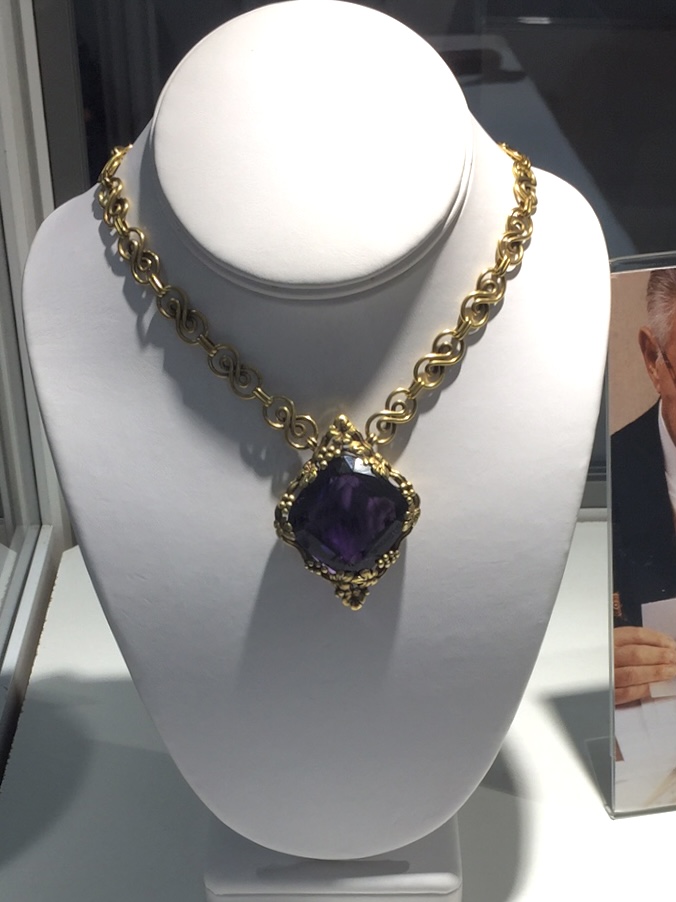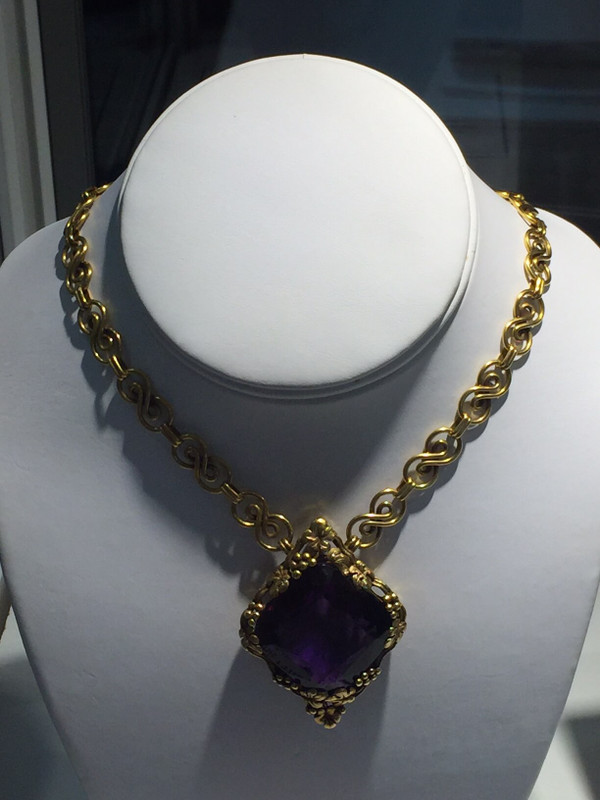Ever wonder about the path a gemstone follows from its ‘birth’ as a crystal to its ultimate use in a piece of jewelry? This blog will follow February’s birthstone, amethyst, through its various stages. As you learned in my February birthstone blog, amethyst is a variety of quartz which naturally occurs in colors ranging from light lilac to a deep, intense purple.
Amethyst crystals are famous for forming in geodes; basically hollow rocks whose inner shell is lined primarily with crystals of calcite or quartz. How does a geode form? It starts with cracks, crevices and cavities in an igneous or sedimentary rock formation. These cavities result from volcanic eruptions trapping gases or the decay of buried organic matter. Over millions of years, rain water absorbs chemicals and minerals from the surrounding rocks, which slowly passed through the cavity, leaving tiny crystals clinging to the side walls of the empty space. The composition of the chemicals passing through the geode determines the type and color of the crystal. A geode can be quite small, the size of a golf ball and can range in sizes over 10 feet tall and weighing several tons. Unopened and opened geodes are popular at rock shows. Here’s a cut geode section containing amethyst and calcite crystals and agate seen in the lobby of the Gemological Institute of America.
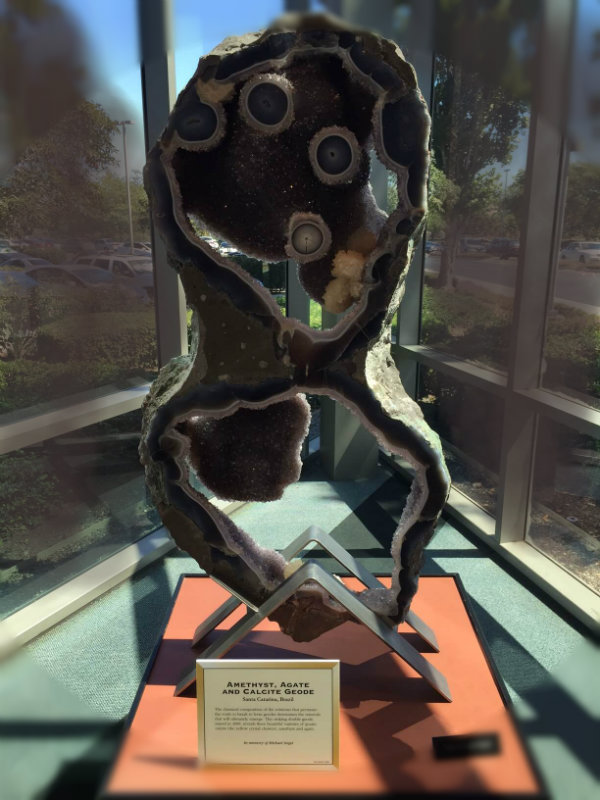
Brazil is a leading amethyst supplier, with mines in a number of its states. In addition to Brazil, Uruguay and Namibia are particularly important locations of amethyst mining. Uruguay produces less amethyst, but many consider its clarity and rich, dark color to be superior to Brazilian amethyst. Russian material is also prized for its rich color. It is not unusual for the finest colored amethyst in the market to be referred to as “Siberian Amethyst.” Zambia is another large global producer. Zambian amethyst is often small, but its dark color and clarity make it some of the finest in the world. Amethyst occurs throughout the United States – in Arizona, Texas, Pennsylvania, North Carolina, Maine and Colorado. The largest amethyst mine in North America is located in Thunder Bay, Ontario, Canada.
Some crystals grow into elegantly tall prisms, which are very highly sought after by collectors. Typically, however, amethyst grows as small, stubby six sided crystals with pyramidal-shaped tops. Below is a photo of such a formation from the Smithsonian Institute collection which was on display at an AGTA gem show I attended.
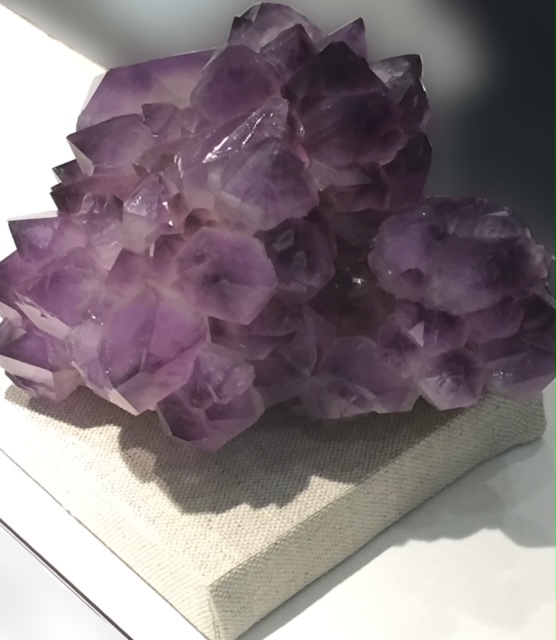
Amethyst crystals are cut and polished by gemstone cutters, forming them into beads, carvings and gemstones for use in jewelry. Amethyst gemstones are available in a wide variety of traditional and fancy shapes, including custom cuts. Here are some lovely amethyst finished gemstones I purchased for future jewelry pieces.
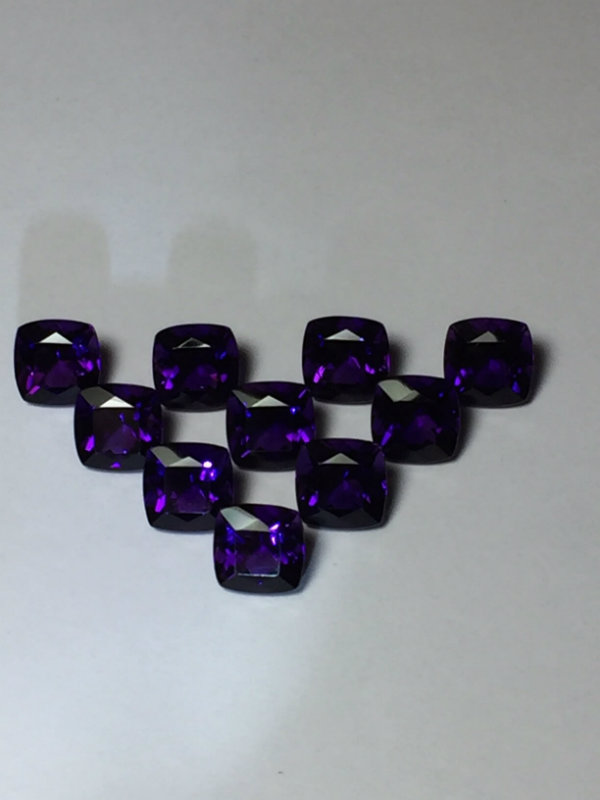
The final step on the journey is to set the finished amethyst gemstone into a piece of jewelry. Since purple is considered to be a royal color, amethyst has a historical importance as an insignia of power. A number of significant jewelry pieces were created throughout history featuring amethyst gemstones. The Gemological Institute of America website features a number of these famous amethyst jewelry pieces:
- Morris Amethyst Brooch - set with a 96-carat heart shaped amethyst, it’s in the Smithsonian Institution collection.
- Duchess of Windsor Necklace - Cartier made this amethyst and turquoise necklace in 1947 for the Duchess of Windsor, Wallis Simpson.
- Queen Silvia’s Tiara - Queen Silvia of Sweden’s tiara is set with amethysts originally owned by the French Empress Josephine.
- Delhi Sapphire – The amethyst known as the “Delhi Sapphire,” is said to be cursed since it was looted from a temple in India in 1855. It's in the Natural History Museum in London.
- Egyptian Amethyst Necklace – This necklace features an 8th century BC inscription.
- Tiffany Amethyst Necklace – According to the Smithsonian Institution, the 56-carat square cushion-cut Tiffany Amethyst was mined in Siberia and is considered the finest Russian amethyst in The National Gem Collection. The stone is prized for its deep purple color with flashes of red. The amethyst is set in an 18 kt yellow gold pendant designed by Louis C. Tiffany circa 1915. The amethyst is delicately surrounded by vines, leaves and berries, a motif Tiffany often used.
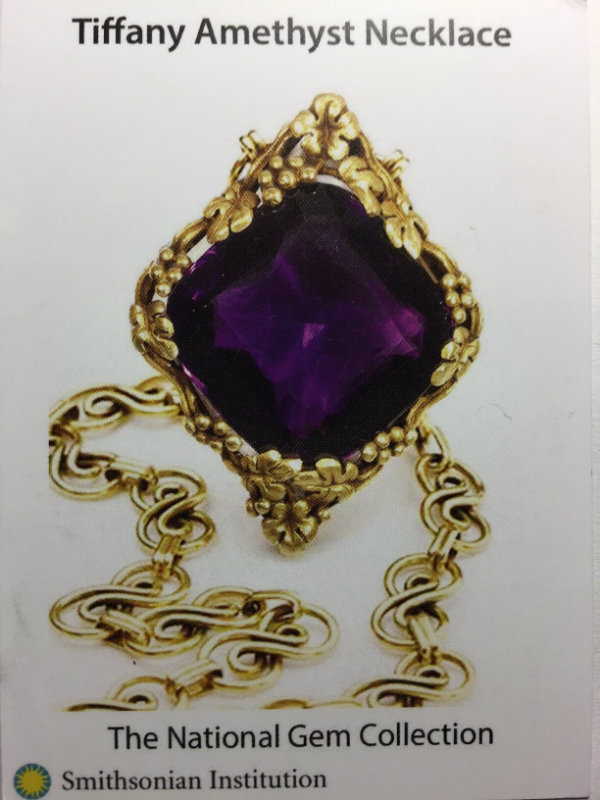
The above photo of the Tiffany Amethyst Necklace is from a card provided by the Smithsonian Institute. Below is a photo I took of the necklace from a Smithsonian display at a gem show I recently attended.
